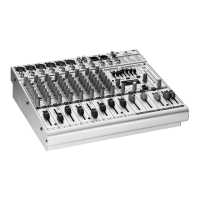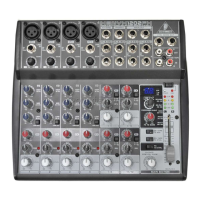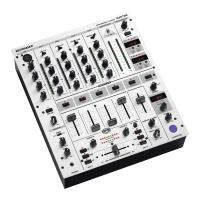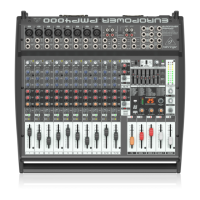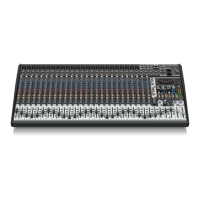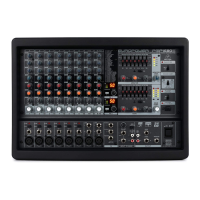8 WING
WING Overview
1. Introduction
Congratulations on purchasing this ground-breaking and innovative console and
welcome to the WING Quick Start Guide. We have built upon the wildly-successful
X32 platform to bring a product to the audio world that expands the capabilities
and ease-of-use in every way. Continue through this guide to get a broad
overview of the WING’s functionality, and don’t forget to visit behringer.com
for tutorial videos and guides.
Before you start
The rst shipments of the WING console are equipped with an early version of the
rmware that will surely be outdated by the time it reaches customers. If you’re
reading this, you are one of the privileged few to get your hands on this console
rst and experience all the new benets.
It is wise to periodically check for new rmware updates, as new features and
bug xes will be released regularly. Our development team is eager to react to
customer suggestions as much as it is to surprise you with improvements and new
features. Visit the product page on behringer.com to download the latest rmware
so you can enjoy the full potential of your WING.
Please refer to Chapter 6 in this QSG for details about the update process.
Source and Channel – a new routing approach
WING takes the idea of labeling channels with names, icons and colors one step
further to the actual Source. Combining and balancing the ratio between audio
sources is the fundamental reason for mixing. It is not about the channel, where
audio processing is applied, it is the Source that matters in the rst place. Hence,
WING Sources comprise a specic input, its preamp parameters like gain, mute
and phantom power, the mode mono/stereo/mid-side, a name, icon and color,
as well as user-denable tags.
These Sources can be used by one or several channels for applying processing
and sending the audio to buses or mains. They can also be patched to any output
directly when no processing is desired, such as recording setups or when sharing
audio with another console for independent mixes.
To summarize:
Sources – This is technically any entry point of audio into the console. An input
could be an analog XLR or ¼” connection to the rear panel, signals from a stage
box, USB connection, expansion card, etc. These are the anchor points for any
audio processing and routing in WING. The Source carries identifying
characteristics like name, color, icon, and tags, and it also owns the gain,
mute, phantom power and mono/stereo/mid-side mode of that input.
48 Mono/Stereo Input Channels – Every Input Channel can be connected to
a Main and an Alternative Source. Channels in WING allow to apply extremely
powerful and exible processing to the Source audio. They can inherit the Source’s
customization properties like name, icon, color and tags. They will automatically
use the input audio in mono or stereo depending on the Source’s mode, and there
is no need for linking channels to a stereo pair any longer. Channel audio can then
be sent to buses or mains for mixing, or it can be tapped individually for
connecting outputs directly.
16 Stereo Buses and 4 Stereo Mains – The 16 Buses will typically be used for
send-style FX processing or monitor mixing, and will often be sent to one of the
4 Mains. Both Buses and Mains can be sent to Matrix, User Signals or
Output destinations.
8 Matrix Buses – Matrix buses can be sent to User Signals or
Output destinations, and are often used for sub or zone mixes.
Outputs - There are a huge number of analog and digital destinations, where
processed, mixed or raw Source audio can be sent to—without any restrictions.
See Chapter 4: Patching and Setup for more details and an example scenario.
2. Hardware Descriptions
VIEW buttons
Each major section of the console’s top panel has a button called VIEW. Pressing
one of these will switch the Main Display to a dedicated screen for the section
whose VIEW button was pressed. The Main Display will often have additional
parameters, options or information that is not accessible from the top panel alone.
While active, a VIEW button will light green. Pressing the same VIEW button will
return the Main Display to the screen that was previously active, and the VIEW
button will lose illumination. Manually navigating away from the screen that was
selected with a VIEW button will also cause it to dim.
In some cases, pressing a VIEW button is just a shortcut to a screen that could
otherwise be reached via Main Screen navigation, and in other cases it is the only
way to access a screen.
Some VIEW buttons support a press-and-hold function that accesses an additional
conguration page. For example, pressing and holding any of the fader bank VIEW
buttons accesses the edit screen where channels and buses can be rearranged.
The VIEW button for the Channel Strip section to the right of the Main Display will
act in conjunction with the 6 block buttons within that section (Input, Filter, Gate,
etc). These merely act as shortcuts to pages within the Home screen, so very few
common functions are more than a button press away.
Monitoring/Talkback/USB
A USB type-A connector allows a ash drive to be plugged directly into the
console for saving or loading data. This allows you to always have a backup of your
show les, or even use a rented WING console while retaining your usual setup.
The connector also allows recording and playback of audio les. The port can
charge a portable device such as a phone or tablet, which is especially convenient
if you frequently rely on a device like this to mix wirelessly.
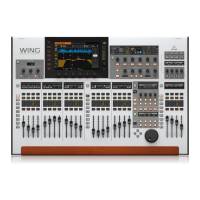
